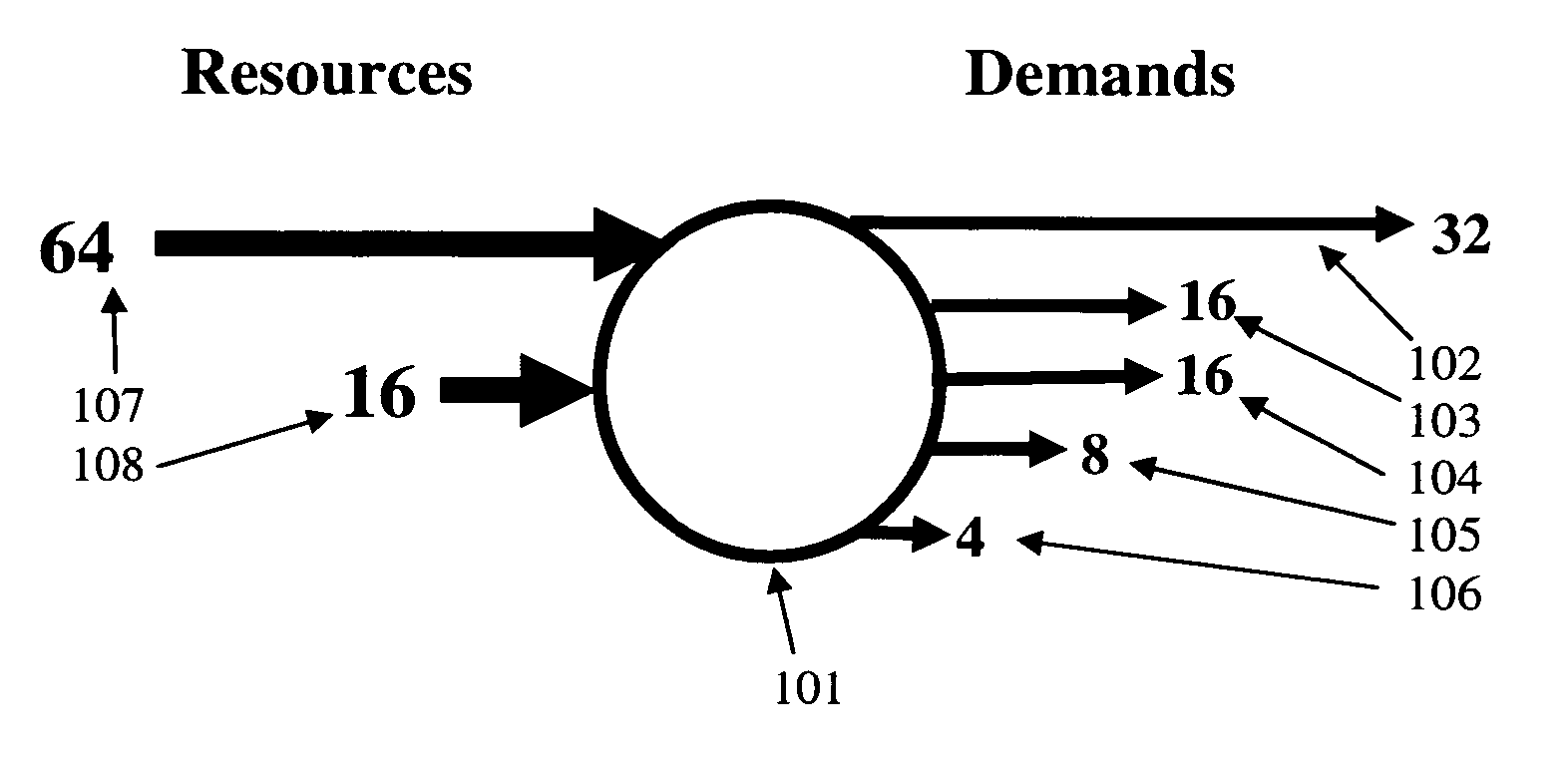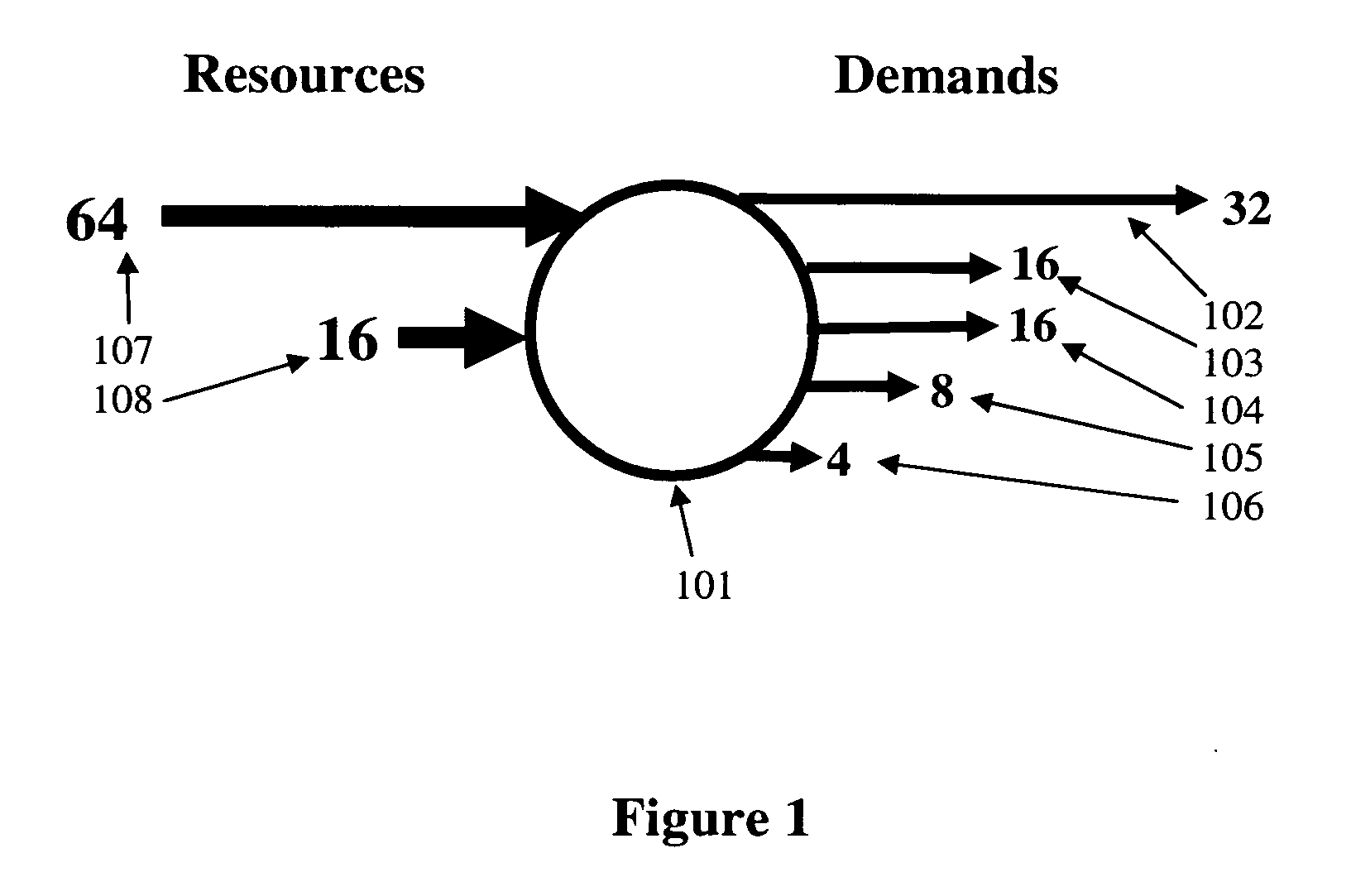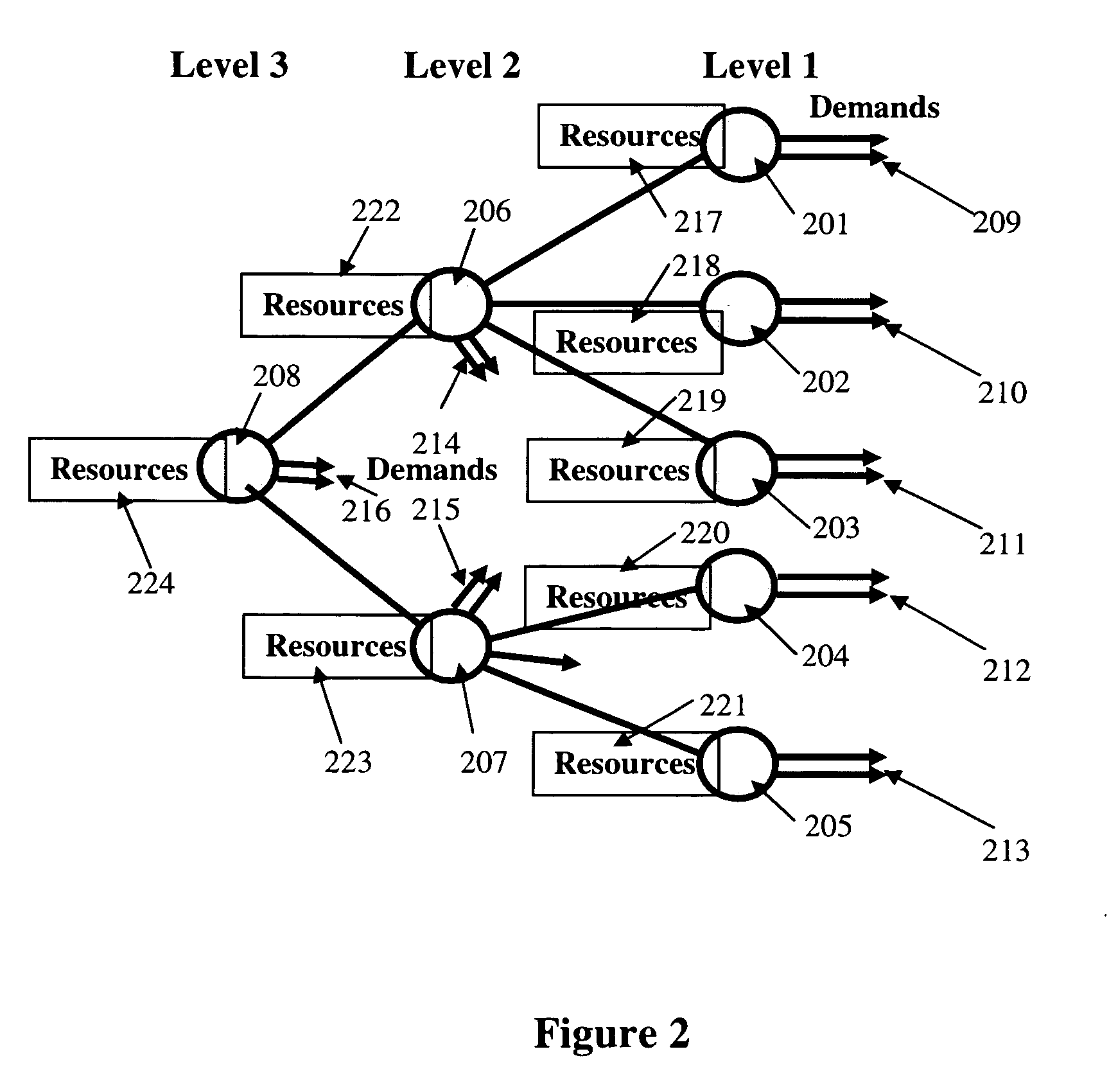Method for allocating blocks of internet protocol (IP) addresses in networks
- Summary
- Abstract
- Description
- Claims
- Application Information
AI Technical Summary
Benefits of technology
Problems solved by technology
Method used
Image
Examples
Embodiment Construction
[0011] Referring now to the figures and to FIG. 1 in particular, there is shown an example of a single node 101 in an IP communications network. The demands 102-106 imposed on the node are subnets or external demands, where each demand comprises a block of IP addresses. Thus, demand 102 is a block of 32 IP addresses, demand 103 is a block of 16 addresses, etc. The size of a demand is always a power-of-two integer (i.e., 1, 2, 4, 8, . . . ). The demands 102-106 imposed on the node must be assigned to serving subnets, referred to as resources. In FIG. 1, resource 107 is of size 64 and resource 108 is of size 16. A resource must also be of a size that is a power-of-two integer. Each of the demands 102-106 must be assigned to a single resource. For example, demands 102, 103 and 104 may be assigned to resource 107, and demands 105 and 106 may be assigned to resource 108.
[0012] The goal is to determine a set of resources that attempts to balance the volume of excess addresses that are no...
PUM
 Login to View More
Login to View More Abstract
Description
Claims
Application Information
 Login to View More
Login to View More - R&D
- Intellectual Property
- Life Sciences
- Materials
- Tech Scout
- Unparalleled Data Quality
- Higher Quality Content
- 60% Fewer Hallucinations
Browse by: Latest US Patents, China's latest patents, Technical Efficacy Thesaurus, Application Domain, Technology Topic, Popular Technical Reports.
© 2025 PatSnap. All rights reserved.Legal|Privacy policy|Modern Slavery Act Transparency Statement|Sitemap|About US| Contact US: help@patsnap.com



